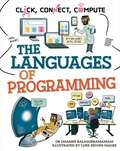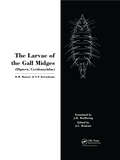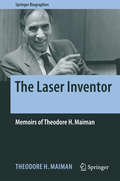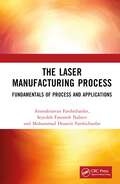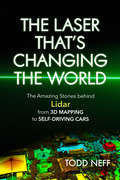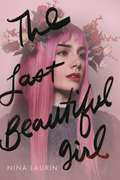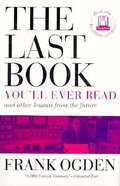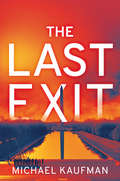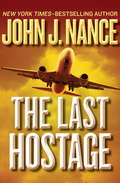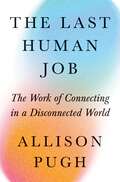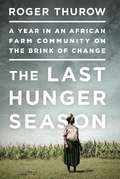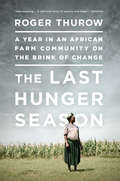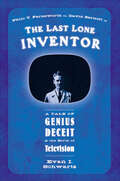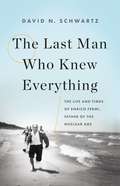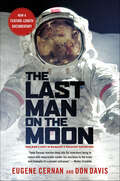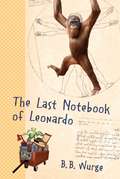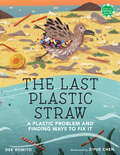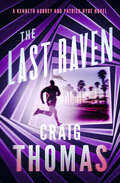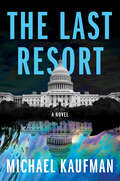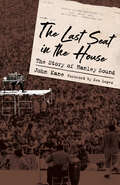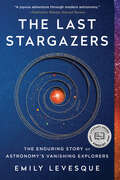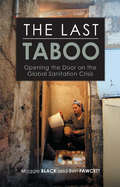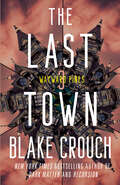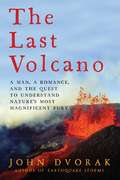- Table View
- List View
The Languages of Programming (Click, Connect, Compute #4)
by Dharini BalasubramaniamComputer language fundamentals, using clear, expert explanations and comic illustrations to spark interest and enthusiasm in the next generation of computer scientists!The Languages of Programming looks at the definitions and uses of languages, bot natural and constructed. Readers will find out about the elements of a programming language, the best types of language to use at each stage of the software life cycle, and about the tools that help to solve difficult programming problems and complex tasks such as monitoring air traffic. And the end of the book fast-forwards to the future of computer science, languages and robotics and considers what it might mean to live in a 'smarter' world.Contents: What is a language? / Languages can come naturally ... / ... or languages can be constructed / Language types for CS / Even more languages! / It's all syntax and semantics / Ways of programming / Choose your language / Programming is a process / Tools to make our work easier / Case study: Blocks vs Python / The future of programming languages / Pioneer portraits / Further information / Glossary / Quiz yourself! / IndexThe Click, Connect, Compute series untangles the computer science web and teaches children about the essentials of computer software, hardware and digital literacy, as well as discussing the ethics surrounding this evolving field. Featuring fun, friendly comic strip illustrations, pioneer bios and a quiz, this is a perfect read for children aged 8+.Books in the series: Computer Science Essentials / Data, Big and Small / Smart Machines / The Languages of ProgrammingWritten in a clear, thoughtful way by computer science expert, Dr. Dharini Balasubramaniam, a strong advocate for ethics and education in her field.
The Larvae of the Gall Miges
by B.M. Mamaev N.P. KrivosheinaThe characteristics of all main groups of soil-bound insects are given in this book.
The Laser Inventor
by Theodore H. MaimanIn these engaging memoirs of a maverick, Theodore H. Maiman describes the life events leading to his invention of the laser in 1960. Maiman succeeded using his expertise in physics and engineering along with an ingenious and elegant design not anticipated by others. His pink ruby laser produced mankind's first-ever coherent light and has provided transformational technology for commerce, industry, telecom, the Internet, medicine, and all the sciences. Maiman also chronicles the resistance from his employer and the ongoing intrigue by competing researchers in industry and academia seeking to diminish his contribution in inventing the first laser. This work will appeal to a wide readership, from physicists and engineers through science enthusiasts to general readers. The volume includes extensive photos and documentary materials related to Maiman's life and accomplishments never before published. "No one beat Maiman to the laser. How important is the laser? How important are all lasers? That is how important we have to regard Maiman's contribution. He and the laser changed all of our lives, everyone's!" Dr. Nick Holonyak, Jr. , Professor of Electrical and Computer Engineering and Physics, University of Illinois at Champaigne-Urbana, and inventor of the light-emitting diode (LED) and co-inventor of the transistor laser "More than five decades later, we can safely conclude that Theodore Maiman's groundbreaking discovery changed the world. Our modern life just as scientific research would be quite different without the laser. " Dr. Ferenc Krausz, Director, Max Planck Institute for Quantum Optics, Garching, Germany, and Professor of Physics, Ludwig Maximilian University, Munich, and pioneer in attosecond lasers and attophysics "Maiman had the stroke of genius needed to take a different approach [from his competitors]. The sheer elegance and simplicity of his design belies the intellectual achievement it represents. If his invention seems obvious to some today, it was far from obvious in 1960. " Jeff Hecht, authoritative science writer on the historical development of the laser, author of books on lasers and fiber optics
The Laser Manufacturing Process: Fundamentals of Process and Applications
by Anooshiravan Farshidianfar Seyedeh Fatemeh Nabavi Mohammad Hossein FarshidianfarThe Laser Manufacturing Process is a comprehensive guide to industrial laser processes, offering insights into their fundamentals, applications across industries, production specifics, and characteristics, including mechanical, metallurgical, and geometrical aspects, as well as potential defects.The book also investigates how industrial laser processes are developed and the diverse attributes of the resulting objects, emphasizing their significance in industrial settings. Here, “objects” refer to the tangible outcomes of laser manufacturing, encompassing a wide array of products and components created through processes like cutting, welding, and additive manufacturing. These objects exhibit distinct mechanical properties, metallurgical characteristics, and geometrical precision, all of which are crucial considerations in their utility and performance within industrial environments.This book functions as a concise reference manual catering to the needs of both students and professionals who require knowledge related to laser manufacturing processes, such as laser cutting, laser welding, and laser additive manufacturing processes.
The Laser That's Changing the World: The Amazing Stories behind Lidar, from 3D Mapping to Self-Driving Cars
by Todd NeffTells the story of a laser technology that will have a big impact on society and the brilliant innovators responsible for its developmentLidar--a technology evolved from radar, but using laser light rather than microwaves--has found an astounding range of applications, none more prominent than its crucial role in enabling self-driving cars. This accessible introduction to a fascinating and increasingly vital technology focuses on the engaging human stories of lidar's innovators as they advance and adapt it to better understand air, water, ice and Earth - not to mention mapping Mars and Mercury, spotting incoming nuclear warheads, and avoiding pedestrians and cyclists on city streets. Award-winning science writer Todd Neff invites readers behind the scenes to meet some of the great innovators who have explored and expanded the uses of this amazing technology: people like MIT scientist Louis Smullin, whose lidar bounced light off the moon soon after the laser's invention; Allan Carswell, who plumbed the shallows of Lake Erie en route to developing the aerial lidar now essential for coastal mapping and hurricane damage assessment; Red Whittaker, the field robotics pioneer who was putting lidar on his autonomous contraptions as early as the 1980s; and David Hall, whose laser sombrero on a Toyota Tundra gave birth to modern automotive lidar.These are just some of the stories Neff tells before looking ahead to a future that could bring lidar to unpiloted air taxis, to the contaminated pipes of the U.S. nuclear weapons complex, and to satellites capable of pinpointing greenhouse gas sources from orbit. As the author makes clear, the sky is no limit with lidar, which promises to make our world safer, healthier, and vastly more interesting.
The Last American Hero: The Remarkable Life of John Glenn
by Alice L. GeorgeOn February 20, 1962, John Glenn became a national star. That morning at Cape Canaveral, a small-town boy from Ohio took his place atop a rocket and soared into orbit to score a victory in the heavily contested Cold War. The television images were blurry black-and-white phantoms. The cameras shook as the rocket moved, but by the end of the day, one thing was clear: a new hero rode that rocket and became the center of the world's attention for the four hours and fifty-five minutes of his flight. He became celebrated in all corners of the world as not just the first American to orbit the Earth, but as the first space traveler to take the human race with him. From that day forward, Glenn restively wore the hero label. Wherever he went, people knew his name and what he had done. Refusing to let that dramatic day define his life, he went on to become a four-term US senator—and returned to space at the age of seventy-seven. The Last American Hero examines the many layers that formed the man and unravels the reasons for his singular role. He was a creation of the media, in some ways, but he was also a product of the Cold War. Not even Glenn himself seemed to fully understand his celebrity. He was a war hero, a two-time astronaut, a veteran senator, a devoted husband, a father, and much more. At a time when increasingly cynical Americans need heroes, his aura burns brightly in American memory.
The Last Beautiful Girl
by Nina LaurinFans of Black Mirror and There's Someone Inside Your House will devour this disturbing story about a dark descent into social media fame. Izzy is determined to use her family's new mansion, and the treasures inside, to outshine everyone in her new town, even when it's clear that something—or someone—in the house has deadly intentions...When Isabella Brixton is forced to move from New York City to a tiny town, she's not thrilled. The silver lining is the gorgeous old mansion she now calls home. As the former residence of a glamorous patron of the arts and muse who died many decades ago, the house has its quirks: whole floors are boarded up, old paintings are covered, and cell reception is nonexistent.Isa is ready to hate her new life, but things turn around when her classmate Alexa, a skilled photographer, suggests they start an Instagram account featuring portraits of Isa inside the mansion. Wearing gowns and jewelry hidden away in the house, Isa looks perfect in the unfiltered photos—almost unnaturally so—and they quickly go viral. Soon she's got a new best friend, a potential boyfriend, and is surrounded by a group of girls who want the photoshoots and fame for themselves. But there's a darkness in the house, and a darkness growing in Isa, too. When girls start getting hurt, it's clear that something—or someone—in the house is growing in power, with deadly intentions.
The Last Book You'll Ever Read and Other Lessons from the Future
by Frank Ogden"The only constant is change. Learn to love it. As the rate of change accelerates, the result will appear chaotic to the uninitiated. But there is elegant order in chaos. Few so far have learned to recognize and profit from it. This is where the future lies."<P> From his houseboat moored in Vancouver harbor — a floating electronic cottage — Frank Ogden monitors the world by computer phone link and satellite dish. His boundless curiosity, his gift for extrapolation, and his ability to synthesize information have made him one of the world's foremost futurists.<P> A consultant to corporations, professional organizations, and government agencies, he is in constant demand as a catalyst of change, stimulating his clients to think creatively about the future and their place in it.<P> Ogden has led a life of profitable nonconformity. Born in Toronto, he was educated in Canada and the United States before serving as a flight engineer in the Second World War. He has since done everything from selling airplanes to joining a team of therapists researching LSD at Hollywood Hospital. He helped establish Canada's first think-tank, was a founding member of the World Future Society in Canada, and in 1989 was elected a Fellow of the Explorers Club in New York.<P> Today Frank Ogden travels the world tirelessly, fascinated as ever by the process of change, seeking out the latest trends, and thinking about where they're leading us. How will the technological revolution affect the way we live? What will the Information Age ultimately mean for the "knows" and the "know-nots"? Is the next millennium to be feared or embraced?<P> Draw from his popular seminars and syndicated "Dr. Tomorrow" newspaper column, The Last Book You'll Ever Read is a sampling of the provocative insights and useful predictions that have made Frank Ogden, in the words of the Los Angeles Times, "possibly the world's most up-to-date futurist."
The Last Exit: A Jen Lu Mystery (A Jen Lu Mystery)
by Michael KaufmanPerfect for fans of Ben Winters and Cory Doctorow. In this thrilling near-future novel, the secret to eternal life is closely guarded by people who will do anything to protect it--even if it means destroying everything in their path. Set in Washington D.C. in the near future, climate change has hit hard, fires are burning, unemployment is high, and controversial longevity treatments are only available to the very rich. Enter resourceful young police detective, Jen B. Lu, and her 'partner', Chandler, a SIM implant in her brain and her instant link to the Internet and police records, and constant voice inside her head. He's an inquisitive tough guy, with a helluva sense of humor and his own ideas about solving crimes.As a detective in the Elder Abuse unit, Jen is supposed to be investigating kids pushing their aging parents to "exit" so they are eligible to get the longevity drug. But what really has her attention are the persistent rumors about Eden, an illegal version of the longevity drug, and the bizarre outbreak of people aging almost overnight, then suddenly dying--is this all connected? Is Big Pharma involved?When Jen's investigations of Eden take her too close to the truth, she is suspended, Chandler is deactivated, and her boyfriend is freaked out by "the thing inside her brain." This leaves Jen to pursue a very dangerous investigation all by herself.
The Last Hostage: The Last Hostage And Blackout (The Kat Bronsky Thrillers #1)
by John J. NanceAn FBI hostage negotiator confronts a commercial pilot who has hijacked his own plane in this spellbinding thriller from New York Times–bestselling author John J. Nance Airline pilot Ken Wolfe does not rattle easily. But when he learns that Rudolph Bostich is on his flight, his face goes pale. Bostich, the presumptive nominee for US Attorney General, bungled the case against the man who kidnapped and killed Wolfe&’s daughter. The pilot is prepared to do whatever it takes to get revenge—even setting off a bomb on a plane full of passengers. FBI agent, psychologist, and rookie hostage negotiator Kat Bronsky now has one hundred and thirty lives riding on her every word. As Bronsky speaks with the volatile Wolfe, she realizes she must solve the mystery of an eleven-year-old girl&’s murder—in a matter of hours—to avert disaster.
The Last Human Job: The Work of Connecting in a Disconnected World
by Allison J. PughA timely and urgent argument for preserving the work that connects us in the age of automationWith the rapid development of artificial intelligence and labor-saving technologies like self-checkouts and automated factories, the future of work has never been more uncertain, and even jobs requiring high levels of human interaction are no longer safe. The Last Human Job explores the human connections that underlie our work, arguing that what people do for each other in these settings is valuable and worth preserving.Drawing on in-depth interviews and observations with people in a broad range of professions—from physicians, teachers, and coaches to chaplains, therapists, caregivers, and hairdressers—Allison Pugh develops the concept of &“connective labor,&” a kind of work that relies on empathy, the spontaneity of human contact, and a mutual recognition of each other&’s humanity. The threats to connective labor are not only those posed by advances in AI or apps; Pugh demonstrates how profit-driven campaigns imposing industrial logic shrink the time for workers to connect, enforce new priorities of data and metrics, and introduce standardized practices that hinder our ability to truly see each other. She concludes with profiles of organizations where connective labor thrives, offering practical steps for building a social architecture that works.Vividly illustrating how connective labor enriches the lives of individuals and binds our communities together, The Last Human Job is a compelling argument for us to recognize, value, and protect humane work in an increasingly automated and disconnected world.
The Last Hunger Season
by Roger ThurowAt 4:00 am, Leonida Wanyama lit a lantern in her house made of sticks and mud. She was up long before the sun to begin her farm work, as usual. But this would be no ordinary day, this second Friday of the new year. This was the day Leonida and a group of smallholder farmers in western Kenya would begin their exodus, as she said, “from misery to Canaan,” the land of milk and honey. Africa’s smallholder farmers, most of whom are women, know misery. They toil in a time warp, living and working essentially as their forebears did a century ago. With tired seeds, meager soil nutrition, primitive storage facilities, wretched roads, and no capital or credit, they harvest less than one-quarter the yields of Western farmers. The romantic ideal of African farmers––rural villagers in touch with nature, tending bucolic fields––is in reality a horror scene of malnourished children, backbreaking manual work, and profound hopelessness. Growing food is their driving preoccupation, and still they don’t have enough to feed their families throughout the year. Thewanjala––the annual hunger season that can stretch from one month to as many as eight or nine––abides. But in January 2011, Leonida and her neighbors came together and took the enormous risk of trying to change their lives. Award-winning author and world hunger activist Roger Thurow spent a year with four of them––Leonida Wanyama, Rasoa Wasike, Francis Mamati, and Zipporah Biketi––to intimately chronicle their efforts. InThe Last Hunger Season,he illuminates the profound challenges these farmers and their families face, and follows them through the seasons to see whether, with a little bit of help from a new social enterprise organization called One Acre Fund, they might transcend lives of dire poverty and hunger. The daily dramas of the farmers’ lives unfold against the backdrop of a looming global challenge: to feed a growing population, world food production must nearly double by 2050. If these farmers succeed, so might we all.
The Last Hunger Season: A Year in an African Farm Community on the Brink of Change
by Roger ThurowAt 4:00 am, Leonida Wanyama lit a lantern in her house made of sticks and mud. She was up long before the sun to begin her farm work, as usual. But this would be no ordinary day, this second Friday of the new year. This was the day Leonida and a group of smallholder farmers in western Kenya would begin their exodus, as she said, "from misery to Canaan," the land of milk and honey.Africa's smallholder farmers, most of whom are women, know misery. They toil in a time warp, living and working essentially as their forebears did a century ago. With tired seeds, meager soil nutrition, primitive storage facilities, wretched roads, and no capital or credit, they harvest less than one-quarter the yields of Western farmers. The romantic ideal of African farmers--rural villagers in touch with nature, tending bucolic fields--is in reality a horror scene of malnourished children, backbreaking manual work, and profound hopelessness. Growing food is their driving preoccupation, and still they don't have enough to feed their families throughout the year. The wanjala--the annual hunger season that can stretch from one month to as many as eight or nine--abides.But in January 2011, Leonida and her neighbors came together and took the enormous risk of trying to change their lives. Award-winning author and world hunger activist Roger Thurow spent a year with four of them--Leonida Wanyama, Rasoa Wasike, Francis Mamati, and Zipporah Biketi--to intimately chronicle their efforts. In The Last Hunger Season, he illuminates the profound challenges these farmers and their families face, and follows them through the seasons to see whether, with a little bit of help from a new social enterprise organization called One Acre Fund, they might transcend lives of dire poverty and hunger.The daily dramas of the farmers' lives unfold against the backdrop of a looming global challenge: to feed a growing population, world food production must nearly double by 2050. If these farmers succeed, so might we all.
The Last Lone Inventor: A Tale of Genius, Deceit, and the Birth of Television
by Evan I. Schwartz“…Fascinating… A riveting American classic of independent brilliance versus corporate arrogance. I found it more fun than fiction.” — James Bradley, author of Flags of Our Fathers“… The fascinating inside story of how this eccentric loner invented television and fought corporate America.” — Walter Isaacson, chariman, CNN“…Compelling…Strong, dramatic prose…” — Kirkus Reviews“…A lively and engaging account.” — Library Journal“[A] gripping and eminently readable saga of the birth of television and the death of the Edisonian myth.” — Darwin magazine
The Last Man Who Knew Everything: The Life and Times of Enrico Fermi, Father of the Nuclear Age
by David N. SchwartzThe definitive biography of the brilliant, charismatic, and very human physicist and innovator Enrico FermiIn 1942, a team at the University of Chicago achieved what no one had before: a nuclear chain reaction. At the forefront of this breakthrough stood Enrico Fermi. Straddling the ages of classical physics and quantum mechanics, equally at ease with theory and experiment, Fermi truly was the last man who knew everything--at least about physics. But he was also a complex figure who was a part of both the Italian Fascist Party and the Manhattan Project, and a less-than-ideal father and husband who nevertheless remained one of history's greatest mentors. Based on new archival material and exclusive interviews, The Last Man Who Knew Everything lays bare the enigmatic life of a colossus of twentieth century physics.
The Last Man on the Moon: One Man's Part in Mankind's Greatest Adventure
by Don Davis Eugene CernanFrom the Apollo 17 commander and NASA veteran, “an exciting, insider’s take on what it was like to become one of the first humans in space” (Publishers Weekly).Eugene Cernan was a unique American who came of age as an astronaut during the most exciting and dangerous decade of space flight. His career spanned the entire Gemini and Apollo programs, from being the first person to spacewalk all the way around our world to the moment when he left man’s last footprint on the moon as commander of Apollo 17.Between those two historic events lay more adventures than an ordinary person could imagine as Cernan repeatedly put his life, his family, and everything he held dear on the altar of an obsessive desire. Written with New York Times–bestselling author Don Davis, The Last Man on the Moon is the astronaut story never before told—about the fear, love, and sacrifice demanded of the few who dare to reach beyond the heavens.“Thrilling highlights . . . a book not just about space flight but also about the often-brutal competition that went on between the US and the Soviet Union.” —Washington Times“A fascinating book.” —Charlotte Observer
The Last Notebook of Leonardo
by B. B. WurgePraise for Squiggle and Billy and the Birdfrogs:"The characters are exceptional, weird, true to life, funny, scary, different, and definitely perk the story . . . an exceptional job. . . . Children will truly enjoy this book."-Midwest Book Review"Billy survives by the sheer weight of its own insane internal logic. . . . For those funny-book junkies out there, Billy fulfills a need. Downright weird, and that's a-okay with me, it's worth a gander."-School Library Journal"One of the best books we have read this year . . . intelligent, well composed, with a strong narrative, likable characters, and just enough scariness and tension to make it hard to put down."-BooksForKids.com"Mystery, suspense, and conflict build a plot of nonstop adventure. Character development is superb . . . clever illustrations, delightful humor, and a marvelous story. . . . Entertaining, downright funny, and highly imaginative. A great read."-Midwest Book ReviewJem's father, a scientific genius, turns himself into a nine-foot orangutan. When their landlord suggests that they leave, they pack their belongings onto a huge wagon and set out on the ultimate adventure: to find the last resting place of Leonardo da Vinci, who, according to his last notebook, may not have died in Italy. They are joined by an old Indian woman, and the threesome's adventures lead to the most unlikely of places-and meetings. Tidbits of science, fun facts about da Vinci and his works, and B.B. Wurge's trademark wacky humor, minimalist illustrations, and lessons on the importance of family make this third novel as exciting as the last two.
The Last Plastic Straw: A Plastic Problem and Finding Ways to Fix It (Books for a Better Earth)
by Dee RomitoLearn how and why a useful, 5000-year-old invention has become a threat to our planet—and what you can do about it—in this history of the simple straw. <P><P> From reeds used by ancient Sumerians to bendy straws in World War II hospitals, people have changed the straw to fit their needs for 5000 years. Today however, this useful tool is contributing to the plastic problem polluting our oceans. Once again, the simple straw needs a reinvention. <P><P> With bright illustrations and well-researched text, children can read about the inventors behind the straw’s technological advancements, including primary sources like patents, as well as how disposable plastic harms the environment. See the newest solutions, from plastic straw alternatives to activism by real kids like Milo Cress who started the Be Straw Free campaign when he was 11 years old. <P><P> Learn about what kids can do to reduce plastic waste. The backmatter includes more information on the movement to stop plastic waste, action items kids can do, a bibliography, and additional resources on plastic pollution. <P><P><i>Advisory: Bookshare has learned that this book offers only partial accessibility. We have kept it in the collection because it is useful for some of our members. Benetech is actively working on projects to improve accessibility issues such as these.</i>
The Last Raven (The Kenneth Aubrey & Patrick Hyde Series)
by Craig ThomasThe downing of a Russian military plane has dangerous global consequences in this spy thriller from the New York Times–bestselling &“master of suspense&” (The Pittsburgh Press). Spymaster Sir Kenneth Aubrey thinks operative Patrick Hyde is dead. Hyde is, in fact, alive, but after witnessing a military airline being shot down by a team including both KGB and CIA, he may not be for long. As Hyde tries to elude capture and get evidence to British intelligence, Aubrey is drawn into intrigue concerning the suspicious crash of a civilian airliner in America—and both will be racing against time to put the pieces together in this edge-of-your-seat thriller that ranges from Gorbachev&’s Russia to Central Asia to sunny California . . . &“Exciting . . . Aubrey and Hyde wear well.&” —Kirkus Reviews &“The denouement is stark and gripping.&” —Publishers Weekly
The Last Resort (A Jen Lu Mystery #2)
by Michael KaufmanMargaret Atwood meets Raymond Chandler meets Greta Thunberg: Jen Lu is back on the case when the death of a lawyer sparks an even more intriguing mystery in Michael Kaufman&’s second book in the thrilling series.It&’s March 2034, six months after D.C. police detective Jen Lu and Chandler, her sentient bio-computer and wannabe tough guy implanted in her brain, cracked the mystery of Eden. The climate crisis is hitting harder than ever: a mega-hurricane has devastated the eco-system and waves of refugees pour into Washington, D.C.Environmental lawyer and media darling Patty Garcia dies in a bizarre accident on a golf course. Of the seven billion people on the planet, only Jen thinks she was murdered. After all, Garcia just won a court case for massive climate change reparations to be paid out by oil, gas, and coal companies. Jen is warned off, but she and Chandler start digging. Signs point to Garcia&’s abusive ex, a former oil giant, but soon Jen turns up more suspects who have an even greater motive for committing murderSoon Jen is in the crosshairs of those who will ensure the truth never comes to light, no matter the cost. She has to move quickly before she becomes next on the killer&’s list.
The Last Seat in the House: The Story of Hanley Sound (American Made Music Series)
by John KaneKnown as the "Father of Festival Sound," Bill Hanley (b. 1937) made his indelible mark as a sound engineer at the 1969 Woodstock Music and Arts Fair. Hanley is credited with creating the sound of Woodstock, which literally made the massive festival possible. Stories of his on-the-fly solutions resonate as legend among festivalgoers, music lovers, and sound engineers. Since the 1950s his passion for audio has changed the way audiences listen to and technicians approach quality live concert sound. John Kane examines Hanley’s echoing impact on the entire field of sound engineering, that crucial but often-overlooked carrier wave of contemporary music. Hanley’s innovations founded the sound reinforcement industry and launched a new area of technology, rich with clarity and intelligibility. By the early seventies the post-Woodstock festival mass gathering movement collapsed. The music industry shifted, and new sound companies surfaced. After huge financial losses and facing stiff competition, Hanley lost his hold on a business he helped create. By studying both his history during the festivals and his independent business ventures, Kane seeks to present an honest portrayal of Hanley and his acumen and contributions. Since 2011, Kane conducted extensive research, including over one hundred interviews with music legends from the production and performance side of the industry. These carefully selected respondents witnessed Hanley’s expertise at various events and venues like Lyndon B. Johnson’s second inauguration, the Newport Folk/Jazz Festivals, the Beatles' final tour of 1966, the Fillmore East, Madison Square Garden, and more. The Last Seat in the House will intrigue and inform anyone who cares about the modern music industry.
The Last Stargazers: The Enduring Story of Astronomy's Vanishing Explorers
by Emily LevesqueThe story of the people who see beyond the starsHumans from the earliest civilizations were spellbound by the night sky-craning their necks each night, they used the stars to orient themselves in the large, strange world around them. Stargazing is a pursuit that continues to fascinate us: from Copernicus to Carl Sagan, astronomers throughout history have spent their lives trying to answer the biggest questions in the universe. Now, award-winning astronomer Emily Levesque shares the stories of modern-day stargazers, the people willing to adventure across high mountaintops and to some of the most remote corners of the planet, all in the name of science.From the lonely quiet of midnight stargazing to tall tales of wild bears loose in the observatory, The Last Stargazers is a love letter to astronomy and an affirmation of the crucial role that humans can and must play in the future of scientific discovery.In this sweeping work of narrative science, Levesque shows how astronomers in this scrappy and evolving field are going beyond the machines to infuse creativity and passion into the stars and inspires us all to peer skyward in pursuit of the universe's secrets.
The Last Taboo: Opening the Door on the Global Sanitation Crisis
by Maggie Black Ben FawcettExcept in schoolboy jokes, the subject of human waste is rarely aired. We talk aboutwater-related diseases when most are sanitation-related - in short, we don‘t mention the shit. A century and a half ago, a long, hot summer reduced the Thames flowing past the UK Houses of Parliament to aGreat Stink thereby inducing MPs to legislate sanitary reform. Today, another sanitary reformation is needed, one that manages to spread cheaper and simpler systems to people everywhere. In the byways of the developing world, much is quietly happening on the excretory frontier. In 2008, the International Year of Sanitation, the authors bring this awkward subject to a wider audience than the world of international filth usually commands. They seek the elimination of theGreat Distaste so that people without political clout or economic muscle can claim their right to a dignified and hygienic place togo. Published with UNICEF
The Last Town: Wayward Pines: 3 (The Wayward Pines Trilogy #3)
by Blake CrouchThe final book of the smash-hit Wayward Pines trilogy from the New York Times bestselling author of Dark Matter, Recursion, and UpgradeWhat&’s inside was a nightmare. What&’s outside is a thousand times worse.Welcome to Wayward Pines, the last town.Secret Service agent Ethan Burke arrived in Wayward Pines, Idaho, three weeks ago. In this town, people are told who to marry, where to live, where to work. No one is allowed to leave; even asking questions can get you killed.But Ethan has discovered the astonishing secret of what lies beyond the electrified fence that surrounds Wayward Pines and protects it from the terrifying world beyond. And now that secret is about to come storming through the fence to wipe out this last, fragile remnant of humanity.The Last Town at last pitches Ethan Burke and his fellow residents into all-out war against the forces outside the town&’s gates—and in doing so delivers every bit the riotously horrific, breathlessly action-packed conclusion that the Wayward Pines trilogy deserves.
The Last Volcano: A Man, a Romance, and the Quest to Understand Nature's Most Magnificent Fury
by John DvorakRanging from Yellowstone in Wyoming to Mount Pelee in the Caribbean, from Bogoslof and Pavlov in Alaska, to Sakurajima in Japan, and, finally, to the massive volcanoes of Kilauea and Mauna Loa in Hawaii—The Last Volcano reveals the incredible journey of a man on a mission to understand the awesome power of volcanic eruptions. Volcanoes have fascinated—and terrified—people for ages. They have destroyed cities and ended civilizations. John Dvorak, the acclaimed author of Earthquake Storms, looks into the early scientific study of volcanoes and the life of the man who pioneered the field, Thomas Jaggar. Educated at Harvard, Jaggar went to the Caribbean after Mount Pelee exploded in 1902, killing more than 26,000 people. Witnessing the destruction and learning about the horrible deaths these people had suffered, Jaggar vowed to dedicate himself to a study of volcanoes. What followed was fifty years of global travel to eruptions in Italy, Alaska, Central America, Japan and the Pacific. In 1912, he built a small science station at the edge of a lake of molten lava at Kilauea volcano in the Hawaiian Islands, with the goal of solving the mystery of why volcanoes erupt and how they could be predicted. Jaggar found something else at Kilauea: true love. She was Isabel Maydwell, a widowed school teacher who came to Kilauea to restart her life. For more than twenty ears, she and Jaggar ran the science station, living in a small house at the edge of a high cliff that overlooked the lava lake. Maydwell would quickly becoming one of the world’s most astute observers of volcanic activity. Mixed with tales of myths and rituals, as well as the author’s own experiences and insight into volcanic activity, The Last Volcano reveals the lure and romance of confronting nature in its most magnificent form—the edge of a volcanic eruption.
